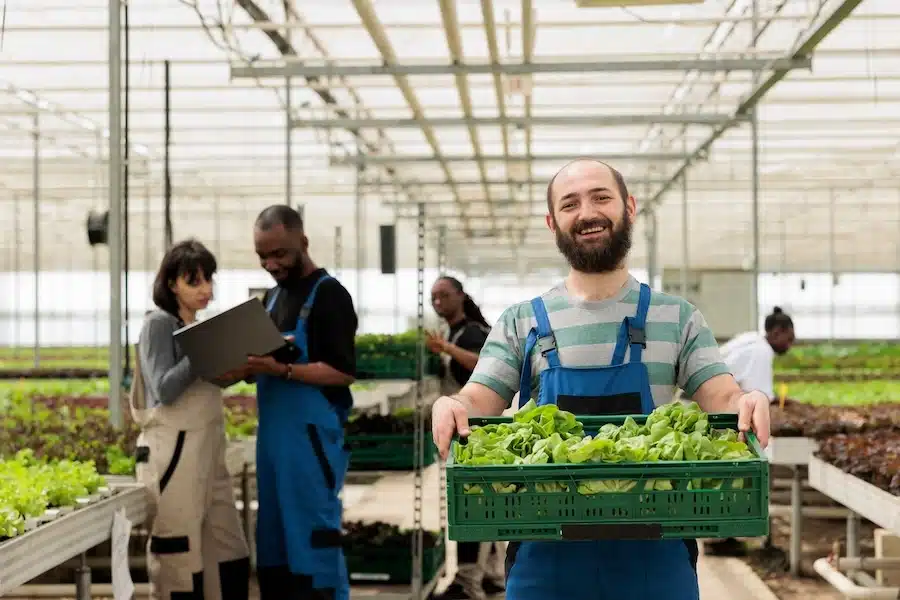Human civilisation is defined by the materials that we use. It’s no coincidence that we name historical ages after the predominant materials of the time. Human progress is inextricably linked to our ability to harness new materials for the good of our society.
The last great revolution came in the 20th century with the invention of plastics, giving us a cheap, lightweight and highly resilient class of materials that could be used for everything from crisp packets to spaceships. Although technically an element rather than a material, silicon could also be called the defining material of our age. By harnessing it as a semiconductor we have been able to build the small integrated circuits on which modern electronics are based. It wouldn’t be an exaggeration to say that our society is built on plastic and silicon.
But what comes next? Although we haven’t seen anything as transformative as the invention of plastic in recent years, advances in science are creating a host of new materials with amazing properties. From plastics made from shrimp shells to metals inspired by Japanese basket weaving, here are some of the new materials that could change your life in years to come.
Shrilk
The world is facing a serious plastic problem. The resilience of the material makes it invaluable as a packaging material, but also means that it can takes hundreds of years to decompose. The UK alone generates 5 million tonnes of plastic waste each year.
One of the solutions often proposed is to switch to bioplastics; plastics made from biomass sources rather than petroleum products. Plastics made from starch or cellulose can theoretically decompose much quicker and require less fossil fuel to produce. However, their green credentials have always been debateable. Bioplastics give off large amounts of greenhouse gas when placed in landfill sites, and use up large areas of farmland that could otherwise be used to grow food. The key to truly sustainable plastic might come from an unlikely source: shrimp.
Back in 2012 researchers at Harvard’s Weiss Institute found a way to synthesise a plastic by combining a substance called chitin with protein from silk. Chitin is the second most common organic material on Earth and is found in insect cuticle, butterfly wings and, most commonly, discarded shrimp shells. The researchers called their invention Shrilk (shrimp+silk). Two years later they found a way to create the plastic without using silk, further simplifying the process. This new plastic is lightweight and sturdy and, best of all, will naturally decompose within two weeks once it is returned to nature.
As well as solving our plastic waste problem, Shrilk could also have important medical applications. As a material that is extremely strong but also completely biodegradable it could be used to stitch up serious wounds, or as a scaffold for tissue regeneration.
Kagome metal
Scientists can find inspiration in the strangest places. Last week researchers at MIT published details of a new metal modelled after a type of Japanese basket weaving. Kagome baskets are based on symmetrical pattern of interlaced triangles and, when this pattern is replicated on an atomic scale, the metals created take on extraordinary electrical characteristics. The team have created an electrically conducting crystal by arranging layers of iron and tin in a kagome pattern. This causes electrons to bend back on themselves rather than flowing in a straight line and the researchers believe that this could hold the key to “perfect conduction”. The kagome structure could potentially be used to create a number of zero energy loss devices and could also have applications in quantum computing.
Assistant professor of physics at MIT Joseph Checkelsky explains further:
“By constructing the kagome network of iron, which is inherently magnetic, this exotic behavior persists to room temperature and higher. The charges in the crystal feel not only the magnetic fields from these atoms, but also a purely quantum-mechanical magnetic force from the lattice. This could lead to perfect conduction, akin to superconductivity, in future generations of materials.”
A helping hand for innovators
New materials could prove to be the key to solving many of the challenges facing the planet in years to come. However, working with new materials is an inherently risky business. Determining the properties and potential uses of a new substance requires a healthy dose of experimentation and a great deal of trial and error.
This can be a frightening prospect. After all, each failed attempt costs money and most companies can’t afford to risk everything on something that might not work. Luckily there are ways to pursue an innovative project without putting too much of your own money on the line. Innovate UK are currently running their Manufacturing and Materials Readiness funding competition which allows UK-based SMEs to apply for a loan of between £100,000 and £1 million for innovative manufacturing or materials projects. A detailed description of the project’s scope can be found here, but one of the priority areas is “innovation in materials development, properties, integration or reuse.”
Because the loans are awarded competitively, your application will need to really stand out. You will have to present a clear plan of action for the next 3-5 years and give a detailed description of how you aim to solve any problems that may arise. Luckily we can help you with this. We have experts on hand who can guide you through the whole process and make sure that your application is as impressive as possible.
Get in touch today and let’s get started.






